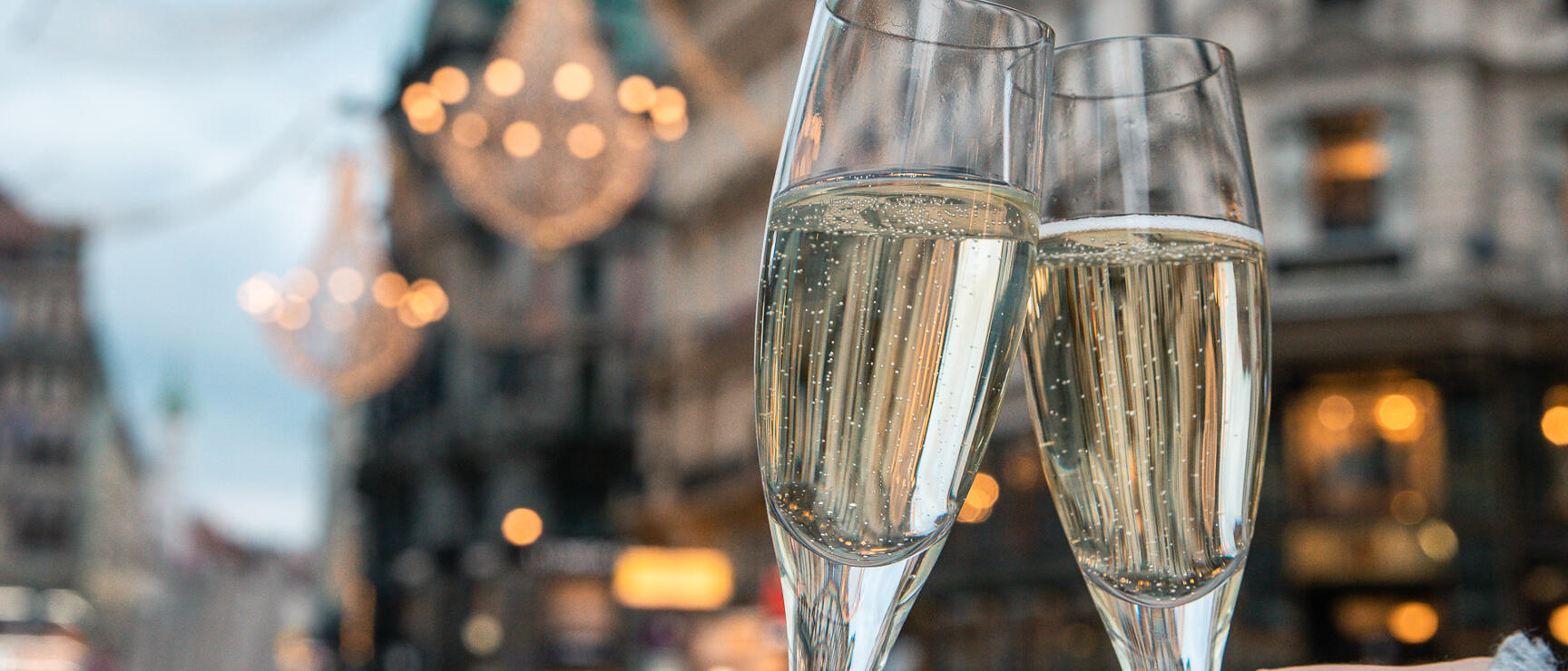
New Year's Celebrations in Austria
Heading to Austria for New Year's Eve? Congrats, you have made the right choice! Austria is the place to be to ring in the New Year and take in the festive activities all around the country. Fireworks, concerts, balls, parties, you name it, we have it all! And if you have always dreamt of waltzing on the streets with a glass of bubbly in your hand at Midnight, even better, your time has officially come!
It’s a night that unites generations and shows Austria at its most charming – full of ease, joy and tradition. Whether you’re dancing outdoors, toasting in a coffee house or chatting at a sausage stand, New Year in Austria is all about shared moments and a zest for life.
Ring in the New Year in style
Vienna
Vienna's entire inner city turns into a massive party zone on New Year's Eve, attracting up to one million people yearly. The Silvesterpfad "New Year's Path" starts at 2 pm on December 31 and ends at 2 am on January 1. Enjoy concerts on the streets, dance to the ever-present sound of the waltz and the latest chart hits and watch the fireworks at the stroke of Midnight, accompanied by all the church bells ringing (and half the town dancing to the Blue Danube Waltz on the street!). Wondering about the stalls selling little pigs, shamrocks and chimney sweeps along the path? Austrians are big on lucky charms. Other things we quite like on New Year's (and any other winter day): Mulled wine and punch to warm up!
On New Year's Eve and January 1, the Viennese State Opera and the Volksoper host gala performances of Johann Strauss' "Die Fledermaus" ("The Bat").
Sustainable celebrations
New Year's eve in the Kleinwalser Valley - without fireworks
More and more people are choosing to skip fireworks and firecrackers at New Year to protect people, animals and nature. The Kleinwalsertal valley is leading the way, celebrating New Year’s Eve without fireworks and instead hosting a big open-air party.
This environmentally friendly alternative offers a festive atmosphere that’s gentle on both people and nature. It also helps reduce pollution while creating new traditions that put community and sustainability centre stage.
New Year's traditions
Viennese Waltz
With the deaths of Beethoven and Schubert, a new era of Viennese music began, dominated by the Strauss dynasty. Johann Strauss composed his first waltz at the age of six and, after succeeding his father as conductor, gained success beyond Vienna. From 1863 onwards, he led all imperial court balls, marking a new chapter in Vienna's dance history.
The Viennese waltz, recognised as UNESCO Intangible Cultural Heritage in 2017, was considered improper until the Congress of Vienna in 1815. It was only with the rise of the bourgeoisie and the opening of salons during the Gründerzeit that a vibrant new era began. Thanks to Johann Strauss, the Viennese waltz remains an integral part of many Austrian traditions today.
Special events
The Vienna New Year's Concert
It has long been a Philharmonic tradition to celebrate New Year's Day with a lively - and at the same time nostalgic - music programme from the vast repertoire of the Johann Strauss family and its contemporaries. The Vienna New Year's Concert not only delights the live audience in the Musikverein but also enjoys great popularity worldwide.
Tickets are like gold dust. With the demand way higher than the number of actual seats available, they are drawn every year. Register your interest here every February, then sit tight and keep your fingers crossed.
Broadcasted on the PBS network and BBC 2 among many other global TV stations, the Vienna New Year's Concert traditionally attracts about 50 million viewers in over 90 countries - making it the most famous classic concert around the world.